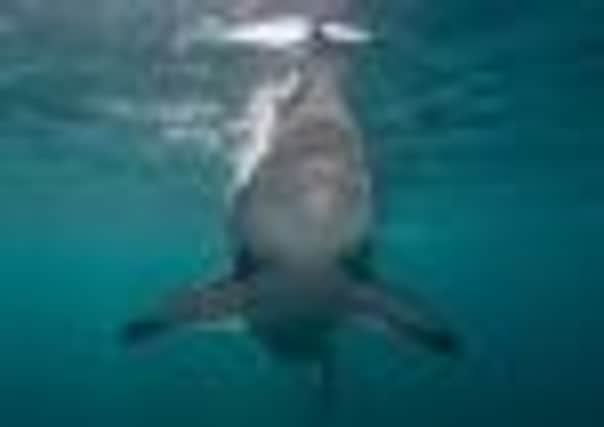Roger Cox: Just because there are sharks in Scottish waters, doesn’t mean they are out to get you. Honest


(Porbeagles are a lot like great whites, only smaller and less angry-looking.) I also pointed out – twice – that no one has ever been killed by a shark in UK waters, and that there have been very few cases of sharks interacting with humans in any way in this northerly neck of the woods. Still, the thought of large, carnivorous beasties cruising around the Scottish coastline in search of their dinner prompted North Sea surfer Tim Pow to write in, saying he found the whole idea “a bit freaky” and asking me if I could look into the likelihood of his coming into contact with Jaws’s little brother while bobbing about in the waves.
Pow also referred me to a recent article in the Surfer’s Path magazine, which suggested that sharks are more likely to visit the North Sea in the autumn because this is when grey seals have their pups.
Advertisement
Hide AdAdvertisement
Hide Ad“If this is the case,” he said, “maybe we just need to be careful going into the seas around our coast at certain times of year.”
No Scottish surfer wants to be told to stay out of the sea in the autumn – it’s when the waves tend to be at their best and when the water is at its warmest – so I got on the blower to Richard Peirce, chairman of conservation charity The Shark Trust looking for reassurance.
“I spoke to several people involved in the Spey Bay incident,” he told me. “It almost certainly wasn’t an attack, but to me it was a very, very interesting incident. The shark was probably a porbeagle, but this was very un-porbeagle-like behaviour because they’re not normally investigatory animals – they normally avoid human contact. I should know: I’ve spent 20 years trying to film and photograph them and I know how bloody difficult it is because they always run away.”
What are the chances of a porbeagle attack off the east coast of Scotland? “Negligible to zero,” according to Peirce. Are there any other species of shark in the North Sea that could potentially do damage to a human? “Theoretically blue sharks may be there,” he reckons. “They are not common and will be just about to buzz off if they are there, because they generally head south when the water goes below about 13 or 14 degrees. Makos are not unknown but they’re incredibly rare these days because we’ve killed most of them. Most of these species are depleted to an amazing extent – we just kill too many and stick their fins in bowls of soup. So really the answer is no. These animals just don’t target humans – if they did we’d have shark attacks in Britain, with the amount of surfers out there now.”
In his book, Shark Attack Britain, Peirce scours the archives for examples of attacks in UK waters but fails to find anything that resembles a proper Jaws-style mauling. That said, there have been accidental deaths caused by sharks – one in which a couple of Royal Navy officers tried to blow up a basking shark with plastic explosives but ended up killing themselves and the shark; one in which a boat was overturned by a basking shark and two of the passengers drowned.
In the latter case, the shark was said to have charged the boat, but Peirce thinks it was probably just breaching and the boat happened to get in the way.
“That’s the closest thing to a shark attack we’ve had in British waters as far as I can tell,” he says. “If I were a surfer I would not be worried.”
So there you have it: surfing in the North Sea may be cold and unglamorous, but at least we don’t have to worry about “the men in grey suits” as Australian surfers sometimes refer to their shark population. That said, surfers in the Hebrides might want to consider the following analysis from Peirce:
Advertisement
Hide AdAdvertisement
Hide Ad“I am of the opinion that we get the occasional great white shark as a vagrant visitor on the west coast,” he told me. “I’ve looked at about 100 incidents of claimed great white shark encounters over the last 20-odd years, of which eight remain credible post-investigation, and they’re all on the west in two clusters: one is off North Cornwall, the other is around the Western Isles.”